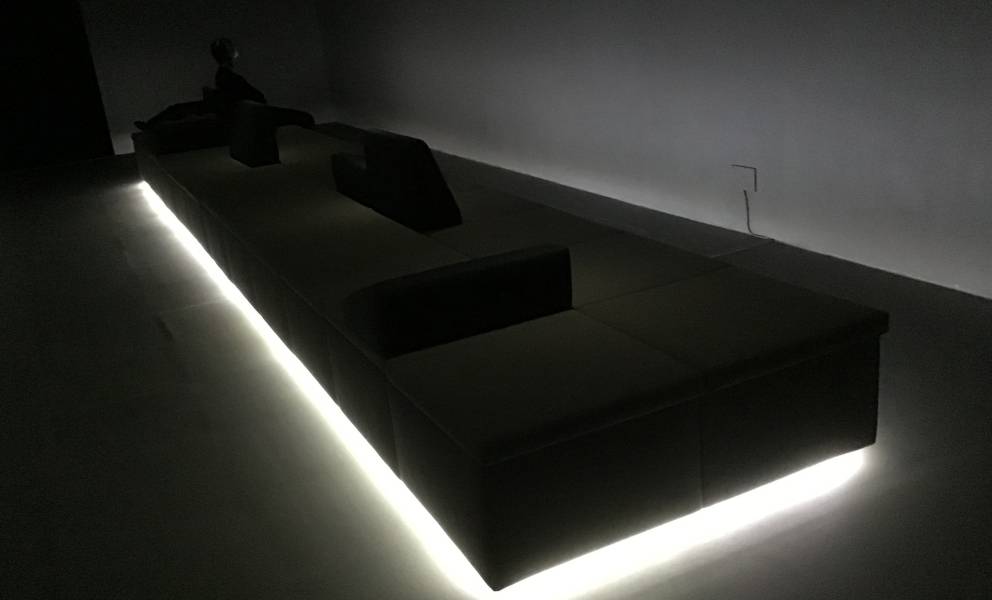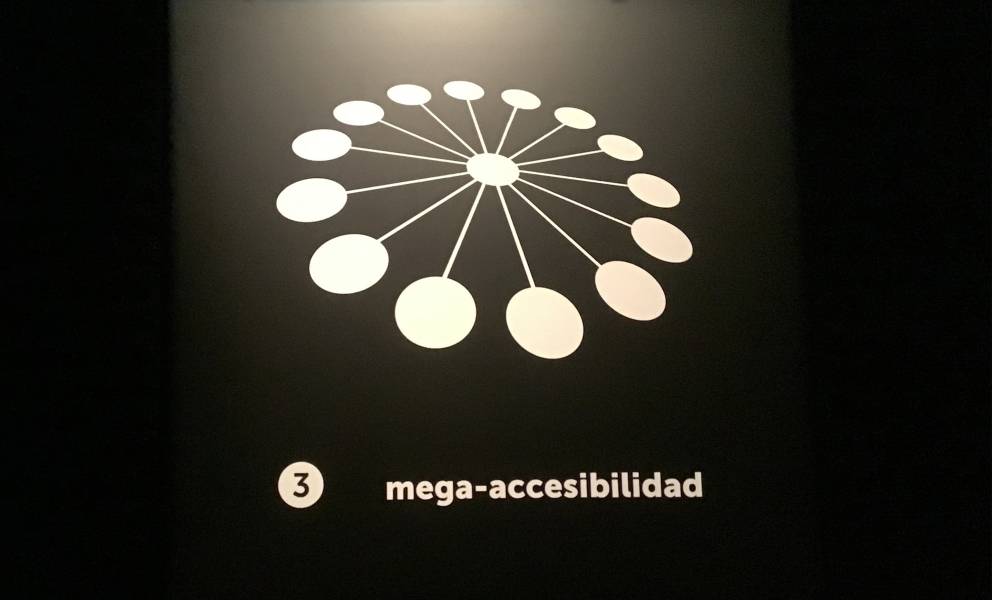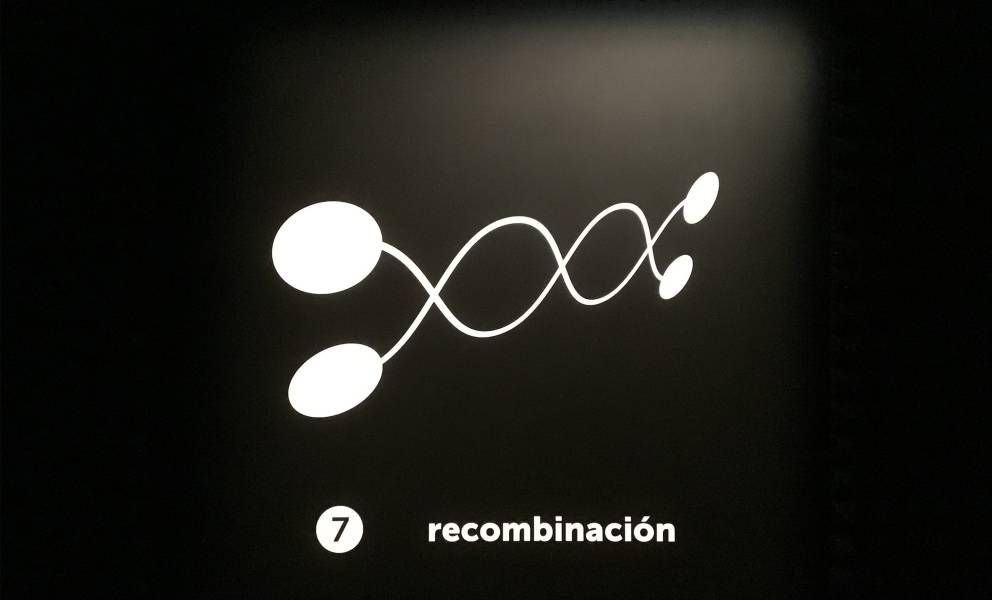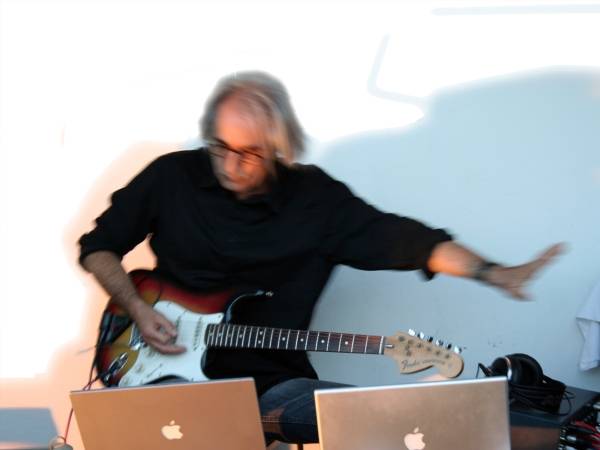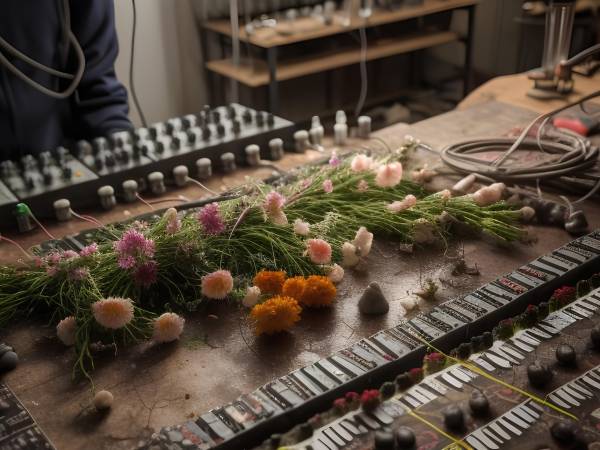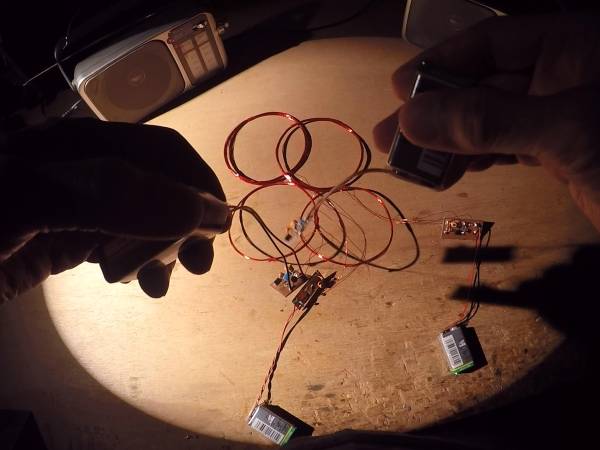23 Minuten
This essay, written in 2019, was commissioned for the catalog of the exhibition originally titled ‘AUDIOSPHERE: Social Experimental Audio, Pre- and Post-Internet’, organized by the Reina Sofía National Museum and Art Center (Madrid, Spain) in 2020 and curated by Francisco López.
Intertwined with –but going well beyond– now familiar fields such as sound art, experimental music, noise or electronica, and spreading over a creative territory –largely unpredictable and out of control– with ‘underground’, unorthodox, intuitive, paradoxically popular-minoritary and adventurous defining features, this is a process of gigantic proportions that amounts to a cultural socialization of the creative work with sound.
This socialization is technical and aesthetic, as well as organizational and philosophical. Rather than a ‘democratization’ –a term that somehow implies an intentionality and direction in the spread of governance power– this process is to a large extent the unintended consequence of a collection of undirected and uncontrolled factors related to techno-cultural changes and market forces that are vastly wider than those related to purely creative artistic work. It involves many thousands of artists and other creators worldwide, most of them virtually unknown, as relevant and decisive agents of this change. This is in fact the manifestation of a fundamental redefinition of the figure of what we could call as the audio-artist or audio-creator of today, as well as the paths for becoming –and the criteria for the acceptance of– such a social-cultural category. All of this naturally with no intention of becoming normative or defining: surely for substantial reasons and with good judgment, many of these audio-creators do not identify themselves with the figure of the ‘musician/composer’ (even if ‘experimental’) or with that of the ‘artist’ or ‘sound artist’, or with any of them.
This process of socialization has generated significant bypasses and operative alternatives to the traditional organizing forces of the academic and the industrial/commercial. Among those are the plethora of ‘independent’, ‘alternative’, ‘underground’ collectives, individuals and non-commercial micro-labels that act as a constellation of very small units of publication, distribution, presentation and exchange of largely uncontrolled cultural products. This socialization has also promoted constructive forms of meritocracy (in the best possible sense of the term) and intuition, which need little or no certification at all from any artistic or normative authority, thus drastically changing the status of the right to create, in terms of both presentation and recognition. This social and political change in the right to create –not only to accomplish the practice but also to claim a cultural status– is probably one of the paramount shifts of the past few decades in the realm of sonic creative work. Yet it remains mostly unrecognized and overlooked under the pressure of more superficial paradigms, such as the now traditional ‘new media’/‘new technologies’, the presupposed ‘analog/digital’ divide and transition, or the classic chronological perspective on the multiple histories of sound art and experimental music.
In stark contrast with most creative practices, this realm of socialized creative audio has an artist:audience ratio of virtually 1:1, as a consequence of an extreme active engagement of its integrating community. In a significant way, this amounts to a novel conflation –or a definitive boundary blurring– of the classic figures of the ‘amateur’ and the ‘professional’. Similarly, the notions of ‘naive’ and ‘experienced’ have suffered a dramatic transformation in the system of values –both social and artistic– and in their appreciation in these communities, as aesthetics of the odd, the uninformed, the unexpected, and the awkward hybridization or the ‘lo-fi’ have become solid, appreciated and constantly-evolving genres.
In short, this artistic and cultural socialization of audio-creation has thus given rise to, among others, new creative mechanisms, strategies, value systems, aesthetics, networks, and affections. In view of the magnitude of this process, a crucial observation that needs to be particularly stressed is that although this socialization has naturally expanded and accelerated with the advent of the internet and the hyper-communication society, it actually started long before it and has its roots and causes in previous techno-cultural-social situations. In particular, it essentially derives from a crystallization of the spirit of counter-culture of the 1960s and 1970s, which took place from the 1980s onwards by an accelerated and massive socialization of tools –both technological and ethical-conceptual– of creation, cooperation, self-editing and distribution. Tools that are as varied, surprisingly simple and even unexpected as the photocopy machine, the audio-cassette, the popular electronic instruments (synthesizers, samplers, effects), the home studio, and later on the personal computer. And, of course, also as a tool, the post-punk and DIY ethos of the intuitive, self-taught and visceral amateur as central figure, protagonist and catalyst of the new audio-creation in a new public space, popular and underground at the same time, of micro-communities that are dispersed but functionally and emotionally interconnected.
AUDIOSPHERE: Social Experimental Audio, 2020 - Reina Sofía National Museum and Art Center (Madrid, Spain)
In essence, what this realm that I call Social Experimental Audio aims to highlight and propose is the enormous relevance and the urgent need for a social and techno-cultural history of sound creation. Instead of (or in addition to) the chronologies and the compendia of names and technologies, a history of processes, mechanisms, integrations and collective coalescences. A perspective that considers socialization as a capital phenomenon of the recent history of experimental audio-creation.
My proposal to move forward in that direction aims at identifying and outlining what I consider to be key processes and realms of the socialization of audio-creation. Each one of them can be understood simultaneously as a wide overarching question and as a territory of discussion that contains multiple critical statements than can be interpreted –that is indeed my intention– as implicit and open questions.
1 - Genealogies
Predominant discourses on the historiography of sound experimentation (as understood by the realms of the so-called sound art and experimental music, in their widest sense) portray a classic monophyletic image (a common single origin) with ‘pioneers’ and ‘avant-garde(s)’ that apparently provide the references and the genealogical explanation of our creative present in this territory. Whereas the historical relevance of the usual grand characters (Luigi Russolo, John Cage, etc.) might be unquestionable, both the development over the past few decades and the current state of sound experimentation cannot be explained or properly understood in many of their crucial features with those references alone. Oft-repeated chronologies of artists and technologies –from the common to the obscure– albeit correct, illustrative and naturally of interest, do not provide substantial and convincing conceptual grounds (in some cases being even counterproductive) to identify cultural mechanisms and ultimate driving forces or to comprehend the evolution of this creative realm. Differentiating themselves from elitist archetypes like that of the bourgeois artist or that of the connoisseur of ‘serious’ music, there are already several generations of creators who have grown up and have been nourished by a popular culture milieu –rock, pop, punk, electronica, etc.– which has decisively shaped and informed their perspectives when they venture into less popular (or, we might say, subterranean popular) territories. A massive number of creators (a majority in many realms) began to work and evolved in their sound experimentation –and continue to do so today– by sheer contact and interaction with different types of home-based, off-the-shelf technological devices that were and are accessible to them. With no formal or structured education/training and without knowledge of any historical context. A virginal and exciting human-machine encounter without clear rules or intentions. It is therefore time to critically revise the multiple genealogies, unquestionably polyphyletic (of multiple origin), that define the current realm of sound experimentation. Acknowledging and analyzing both the social and the techno-cultural is essential to clarify causes, mechanisms and driving forces of the evolution and development of this realm. Kairology instead of (or in addition to) chronology; social history and multiple rhizomatic genealogies as attestation of the current reality of sound creation.
2 - Networks
One the key elements in relation to the rise and development of social experimental audio is naturally that of networked cultural and social structures. This does not solely refer to the restricted case of the current so-called ‘social media’, nor even exclusively to the post-internet world in general. In spite of the obvious differences in scale, speed and technological basis, cultural networks with an international/global character, decentralized, without necessarily unified direction or specific ideology, generators of new coordinated creation and new collective creative paradigms, are not a consequence of the internet but have rather unfolded and manifested in a number of previous historical episodes. The multiple underground ramifications of post-punk, the so-called ‘industrial music culture’, and the global ‘home-music network’ and ‘cassette culture’ scenes are prominent and catalyzing pre-internet examples of the more widespread explosion of social experimental audio. These multiform international frameworks not only manifest as expressions of the classic DIY ethos, with independent networks for production, publication and distribution, but also with the less patently recognized but equally ubiquitous DIT (‘Do-It-Together’), which propels creative collaboration and cooperation for joint learning and production. Beyond mere communication, a fundamental consequence of these particularly active networks is the generation of a distributed and deinstitutionalized popular tele-academy that becomes the main framework for learning, as well as the apparition of relatively non-controlled forms of tele-collaboration and tele-production. All of them permeated by etho-aesthetics of independence, self-organization, the non-commercial and the alternative. From the dystopias and disillusions of classic political socialist ideology to the cryptic manoeuvres of neo-capitalism, from the analog to the digital, from the postal system to electronic communication, from the classic underground to a possible present ‘undercloud’, social sound experimentation struggles, evolves and expands in these socially natural networks.
3 - Mega-Accesibility
One of the most transformative and yet least recognized processes that has taken place over the past few decades is that of the massive socialization of creative technology (what is usually called more imprecisely as ‘democratization’). Overwhelmingly more relevant than the classic –and comparatively superficial– successions of ‘analog-digital’, ‘new technologies’, etc., this socialization constitutes a process of simplification, atomization, redistribution and dramatic increase of accessibility to common tools for creation and dissemination. Disorganized, to a large extent an unintended consequence of commercial interests, lacking an ethical or political project, multiform and quickly mutable, uncontrolled in its progressions and regressions, this process has resulted in a mega-accesibility with no precedent in the history of creation. Sound experimentation is probably the creative realm where this phenomenon has manifested more precociously and with more intensity and clarity: from the cassette home studios of the 1980s to the personal portable studio solely constituted by a laptop, or even just a smartphone; from the electric guitar to sonic generation/transformation software. Never before so many people shared the same tools for creation and diffusion, the practical-use learning curve of which is virtually instantaneous. This explosive combination has given rise, in a natural and inevitable way, to the apparition of a colossal number of audio-creators and units of diffusion and exchange of those creations, in the form of micro-editions (from cassette labels to net labels), micro-emitters (from pirate and community radios to individual podcasts) and micro-publications (from fanzines to blogs), among others. Mega-accessibility has thus become a qualitative shift by means of the quantitative surpassing of a critical threshold. In the realm of sound experimentation, it has brought about the syncretic creative individual with the ability –limited, conditional, but present nonetheless like never before– for self-production, self-publication and self-dissemination.
4- Cyborgization
The universalization and socialization of creative technologies in the realm of sound experimentation have led to a form of naturalized incorporation of those tools in the creative tissue and praxis of this territory. The immediacy and transparency they have acquired in the current techno-cultural situation appear in stark contrast to traditional paradigms like the classic musical instrument, acoustic or electronic, or the –by now also classic– recording studio. Counter to reiterative narratives on the focus on “new technologies”, the result of this techno-cultural reality is the seeming paradox of a conceptual and perceptive dissipation of those tool-technologies; their Heideggerian disapparition, the volatilization of The Instrument (with capital letters, in its widest sense as epitome of musical sound creation). This intimate integration, ultimate and perhaps optimal, is what we could understand as cyborgization, in the best possible anthropological sense. A patent consequence of this situation is that when everyone can get access and handle those tools, traditional interpretative virtuosism loses its raison d’être in a world of common and immediate buttons, knobs and trackpads. This is precisely the allure of the current situation in creative sound experimentation: a tabula rasa where all creators wear emperor’s new clothes, which in turn demands a redefinition of virtuosism, from instrumental to spiritual.
5 - Aesthetogenics
The genealogical eclecticism, the new forms of creative interaction and the different levels of accessibility and technological integration in social experimental audio not only give rise to structural, organizational or ethical-social changes. Inevitably, fortunately, they also generate new aesthetics. This has been the case over the past few decades, often at a frantic pace and with the effervescence swings that one would expect from a popular culture phenomenon. This intense evolution and diversification of ideas, techniques, perspectives and tastes has given rise to a profuse list of types, styles, categories, genres and sub-genres of sound experimentation, with and without denomination: ‘industrial music’, ‘cassette culture’, ‘noise music’, ‘power electronics’, ‘drone’, ‘ambient’, ‘dark experimental’, ‘ritual’, ‘isolationism’, ‘plunderphonics’, ‘turntablism’, ‘laptronica’, ‘lowercase’, ‘Lo-Fi’, ‘No-Fi’, ‘Lo-Res’, ‘glitch’, ‘mashup’, ‘loop music’, ‘free improvisation’, ‘experimental techno’, sound art brut, high-frequency ultra-minimalist, experimental field recordings, toyish/computer-game sound aesthetic... In addition to the formal, dynamic, timbral, rhythmic or stylistic changes, this aesthetogenics also manifests in social sound experimentation in the form of radical shifts in the conceptual and referential context of the pieces created. This engenders visual aesthetics more connected to popular sub-cultures and with a penchant for the cryptic, for alterity, for the deliberate absence of liner/program notes, explanations or contextualizations. All these changes take place, and are to a large extent explained, by the drastic decrease –often complete dissipation– of the traditional regulation and control exerted in diverse ways by both the academic and the commercial forces. The relative alienation and ostracism of the experimental have in turn their advantages: an individual with no regulated training/skills whatsoever but with a good dose of intuition and talent has in fact an advantage as potential generator of aesthetic innovation. And this is particularly relevant when the socialization of creative technology gives rise to millions of potentially creative individuals.
6 - Recombination
Similarly to other decentralized population phenomena, such as biological evolution or the transformation of language, cultural recombination, in its widest sense, is consubstantial with social sound experimentation. The already classic notion of ‘remix’ is in this territory just a minuscule parcel of a fundamental and defining driving force with multiple manifestations: processing, manipulation, treatment, mix, mutation, transfiguration of sonic materials... they all make up one of the most profound essences of the sound experimental praxis, particularly in its social incarnation. Beyond the usual networked exchange for listening, sound materials are shared and exchanged with the explicit intention of generating new sonic creation; anything becomes ‘source material’. The recorded cultural heritage –own’s or somebody else’s– ceases to be only memory to become the starting point of a new cultural reincarnation thanks to the powers of recombination. The ‘pieces’ are not just final fixed endpoints but also sonic seeds and inspiration in an instantaneous globalized noosphere. Propelled by its collective and dynamic nature, the technological, aesthetic and ethical capability of social sound experimentation has reached such a magnitude that we are not dealing anymore with versions, references or allusions but rather with a true thorough reconfiguration of the sonic substance, as well as an intrinsic dynamic of constant creative evolution. Along with the traditional variations of forms, canons, inspirational frameworks or styles, social experimental audio has additionally brought forth the collective recombination of sound matter itself.
7 - Rights
Ultimately, perhaps the most far-reaching historical-cultural consequence brought forth by the socialization and popularization of sound experimentation might be a fundamental shift in the right to create. Tremendously more relevant than the superficial understanding of the oft-repeated technological changes per se, this genuine leader-less, program-less revolution is almost virtually ignored, due in part to a reactionary perception of the consequences of the exercise of that right. When millions of people creatively produce and disseminate their work –as is the case in social experimental audio– the avalanche of ‘information’ turns for some into a mind-boggling, overwhelming situation. Obsolete arguments then make their way in, such as the fallacious inverse relationship between quantity and ‘quality’. Just as it happened during the early years of the printing press –with futile objections based on the fact that suddenly more books could be produced and accessed than what a person could read in his/her lifetime– the socialization of the right to create is a techno-culturally natural process; inevitable, desirable and extremely fruitful. As it is manifest in social experimental audio, this right to create is no mere ethereal principle: self-production and self-diffusion, synergized by popular judgement –majoritarian or minoritarian– and by the lack of lust for fame, so distinctive of commercial music, have given rise to an etho-aesthetic of appreciation of creation with very little remnants of classic imperatives, neither academic nor commercial. The audio-creator is not the one who is in possession of a credential or has a commercial impact, but instead the one who asserts himself/herself that he/she is an artist and then proves it by exercising it: a meritocracy with social redistribution and redefinition of the assessment of what is ‘successful’ or ‘interesting’. In stark contrast to commercial music, as well as to the star-system of contemporary art, this is the reason why the proportion between artists and public in the realm of social sound experimentation is virtually a shocking 1:1 ratio: all of those interested are also active creators themselves. Moreover, this is also the cause of the obsolescence in this realm of the traditional dichotomy between ‘amateur’ and ‘professional’. In social experimental audio, with astonishing frequency, those ‘amateurs’ who lack context and traditional training are in fact the ones who spawn surprising and juicy innovations. Thus, in this realm there is a constant redefinition of aesthetics and value systems, decentralized and out of control, impossible to encompass and with pernicious consequences, but fruitful, natural and desirable: we are all creators.
An Exhibition of Immaterial Abundance
Whereas the abovementioned processes and realms provide the framework for the homonymous sections of AUDIOSPHERE: Social Experimental Audio, Pre- and Post-Internet, my conceptual and curatorial strategies for the exhibition as a whole manifest in quite an unusual outcome in terms of presentation, which is probably outlandish for many. AUDIOSPHERE is possibly the first large-scale, non-conceptual exhibition of contemporary art with no objects and no images. This peculiar and forthright combination of abundance and immateriality is neither whimsical nor accidental but rather a consequential and natural reflection of what I consider to be crucial features of social experimental audio.
AUDIOSPHERE: Social Experimental Audio, 2020 - Reina Sofía National Museum and Art Center (Madrid, Spain)
In this framework, three interrelated essential axes, which I summarize below, articulate this exhibition:
1 - Abundance
This exhibition features the work of hundreds of artists/creators from all over the world (see exhibition’s catalog index with comprehensive list of all works and direct links to all artists’ websites), to a large extent unknown for most of the public. This unusual abundance is not the outcome of an ambition of scale but rather of an argumentative and illustrative need. In fact, despite a vast geographical, generational and aesthetic diversity (among other criteria), this group of artists represents only a small sample –naturally subjective and with absences, but carefully selected– of the immense universe of social experimental audio.
This magnitude is, on the one hand, an explicit recognition of a present reality in which a large number of creators –not just a reduced elite– have a genuine relevance, in what we could call as an atomization of leadership. On the other hand, this abundance is also a direct reaction to a clamorous lack, which has already accumulated over several decades, in the presentation of the work of audio-creators who remain in the shadows –or the penumbra– and who have either spent a lifetime producing fascinating sonic innovations without virtually any recognition, or have just begun to do equally worthwhile work, subjected to similar ostracism, in many cases precisely because of their excessive iconoclasm, accompanied by an inability to manage the mechanisms of the cyber-social cool of today.
This exhibition thus aims at simultaneously making a call for attention on an enormous historical-cultural vacuum and advancing significantly beyond what is already an everlasting repetition of the "ABC" of sound creation (a very short list –both in number and in terms of aesthetics– of ‘pioneers’, figures of ‘the avant-garde’ and equivalent) in many of the historical exhibitions of so-called sound art in the field of contemporary art.
Such magnitude and diversity necessarily imply an absence of clear or strict boundaries, both artistic/sonic and temporal, to demarcate the monumental field of social experimental audio. However, this does not mean that such a realm can not be recognized as a conglomerate of centers of gravity, defined implicitly and exemplified precisely by the set of works and artists in this exhibition, which essentially reflect relatively underground, non-commercial, non-academic territories. Established by the manifestation of the aforementioned processes of mass socialization of creation, the time period covered, fundamentally from the 1980s onwards, comprises the turn of the century with a natural division approximately equivalent between a period essentially ‘pre-internet’ in the last two decades of the 20th century (obviously not in its invention, but in its extended social implantation) and a fully “post-internet” period, in the first two decades of the 21st century.
Finally, the abundance in this exhibition is obviously also a natural indication of the general abundance of the ‘infosphere’ in which –for better or worse– we are supposed to be immersed. The overall recommendation is, therefore, not to attempt to use the obsolete strategies of exhaustivity and systematization of contents. Instead, accepting that the impossibility of an all-encompassing gaze is not a defeat against the information avalanche but rather a victory of a desirable natural diversity, AUDIOSPHERE unfolds as a wide micro-universe in which we can search and find but also find without searching. These searches and finds are moreover exponentially multiplied by the conception of the exhibition and its peculiar technological implementation, because each work constitutes an entry point to the immensely larger world of each artist and his/her accessible network of countless and immediate connections to other artists. This AUDIOSPHERE is not really contained by the walls of the exhibition rooms, but by a virtual membrane with thousands of telematic pores.
AUDIOSPHERE: Social Experimental Audio, 2020 - Reina Sofía National Museum and Art Center (Madrid, Spain)
2 - Listening and Immateriality
Despite appearances, listening itself is often the big absence in many exhibitions of so-called sound art. True, profound, dedicated, penetrating and revealing listening, that is; not simply the referential or document-oriented version of it. This seeming paradox is in fact easily explained if we understand both the meaning and the consequences of the not-easy-at-all distinction between ‘things that sound’ and ‘sounds that thing’, if we allow such an expression. That is, audio in itself as creative material and as object. Not in the ‘abstract’, but precisely the opposite: in the concrete.
This exhibition does not present sounding objects, installations, records or publications. It does not show their analog or digital equivalents of representation, either. It only presents, as it is indicated for the visitors, ‘immaterial aural works’. Perhaps to the surprise of many, I do not consider AUDIOSPHERE to be an exhibition of sound art. Given its attention and exaltation of listening, as well as the particular selection of works, which have fundamentally been developed and exist in the realm of listening, if it is indeed art, it would be in any case an ‘audio art’ or an ‘aural art’. This distinction is not just a matter of terms. A fundamental consequence of this overall exhibition approach is a redirecting of the spectator attention from the ‘source-object’ –the classic material construction with speakers and/or other sounding objects, characteristic of canonical sound art– to the actual audible (immaterial) ‘materials’ themselves. This apparently simple but crucial refocusing could amount to a demarcation of an audio art as an audio-creative practice focused on the act of listening (with which the term ‘audio’ has its etymological connection) and on the work with those paradoxical ‘immaterial materials’. A creative practice simultaneously liberated not only from the most restrictive and traditional conceptions of music (an already classic claim) but also from the perhaps comparably restrictive tradition of visual object-based art.
For a period of time so-called sound art established –and it was justifiably proud of it– a territory that was to some extent freed from the restraints and restrictions of the more conventional conceptions of music. In my opinion, however, it is now being phagocytized by contemporary art and thus turned into a minor parcel inside it, basically because of the combined strength of its conceptual, epistemological and object-based paradigms. There are already signs that the next refuge for the audio-creator interested in the aural might be back in music. Obviously, in the lawless, no-man’s lands of music’s most inhospitable frontiers.
Technically, listening takes place in this exhibition via an App (AUDIOSPHERE App), specifically developed for it, which acts as an individual interface to access the immaterial aural works (including options for random selection from a pool of works). This access requires the visitor’s physical presence in the different exhibition rooms but it allows an unrestricted individual mobility, in a form of virtuality between works and spaces. Listening takes place with very high quality headphones, a crucial feature that attends to the weakest point nowadays –often surprisingly the least attended– of the technical sequence of sound playback, which is not digital resolution anymore, but rather the speakers or headphones that re-physicalize for perception the encoded audio at the end of that sequence.
It is important to stress that this immateriality of aural works does not imply at all to ignore or obviate all the material elements that are involved in their production and reproduction (from microphones to fiber optic cables), which we are all fully aware of. However, we should neither confuse nor conflate the unavoidable materiality of the means and intermediate processes (which also exist in a differentiated way in traditional material works, such as a painting) with the work itself, if it is considered aural. Just as some massless sub-atomic particles require an enormous quantity of material means and energy to be produced in their ephemeral existence, so it is with sound generation, which fleetingly manifests with an ethereal presence of instant dissipation.
Such an aurality, thus understood for the works, along with the technical-conceptual design of AUDIOSPHERE, provide an additional and extraordinary option for the visitor: to take with him/her –solely by virtue of his/her physical presence and his/her dedication to listening– some of the works of the exhibition (pieces specially commissioned for this exhibition, archived here in free streaming). This does not refer to the typical reproductions, copies or representations (the classic Benjaminian copy), but rather implies literally a digital clone of the original digital work. That is, the visitor does not take a ‘duplicate’ in the traditional sense, but has instead exactly the same thing that the artist has. If you like, another possible paradox of audio-immateriality.
3 - From Exhibition to Experimental
A clear corollary of all the above, for this kind of immaterial creations, is the transfiguration, techno-culturally natural, of the museum space, from the exhibition-related to the experiential. Instead of (or in addition to) presenting objects or referential documents of immaterial works, a new significant role emerges as that of the exceptional space of experience.
Such is the case in this exhibition: with no objects and no documents; where the spaces have been architecturally designed and reconfigured to encourage a type of profound listening, with exceptional comfort; in which visitors have at their disposal playback capabilities that are exceptional for most of them; and where a combination of temporary disconnection from the usual excess of individual tele-communication (already marketed by some as ‘digital detox’), together with a dramatic absence of physical elements and information, constitute an environment that is increasingly unusual nowadays. AUDIOSPHERE operates with a situation-strategy that I usually call monomedia: a deliberate temporary sensorial-informational reduction to promote the most powerful form of multi/trans-media: not the traditional one that takes place outside the body, but the one that occurs inside it.
In a world where all information is supposedly accessible, what has become tragically inaccessible is precisely the situation of absence of information. Or, perhaps more accurately in our context, of absence of constant peripheral information. When contents are ubiquitous and universally accessible, particularly in the case of digital or digitizable works, the essential need is not the access to the object or its satellites, but the type of situation and the kind of relationship with it. The experiential spaces of the immediate future –like their ancestral equivalents since the dawn of humanity– can provide exceptional conditions, rarely available outside them, for such ambitious and necessary purposes as re-focusing, hyper-perception, concentration, enhancement, penetration, exaltation, magnification and, ultimately, the profound transformation of our interaction with the world, beyond its hyper-active superficial layers of semantic and representational fervor.
AUDIOSPHERE manifests itself as such an experiential space, to give access, as a multiple portal, to the huge, delocalized, underground and multiform universe of social experimental audio.
Francisco Lopez
Francisco López is internationally recognized as one of the main figures in the realm of experimental music and audio art. His experience in the field of sound creation and work with environmental recordings covers a period of more than forty years, during which he has developed an impressive sound universe that is completely personal and iconoclastic and based on a profound listening to the world. He has realized hundreds of sound installations, projects with field recordings, and concerts/performances in over eighty countries, including the main international concert halls, museums, galleries and festivals, such as: National Music Auditorium (Madrid), PS1 Contemporary Art Center (New York), Museum of Modern Art (Paris), International Film Festival (Rotterdam), Festival des Arts (Brussels), EMPAC (Troy, USA), Darwin Fringe (Darwin, Australia), Institute of Contemporary Art (London), Museum of Modern Art of Buenos Aires, Museum of Contemporary Art of Barcelona, Center of Contemporary Art (Kita-Kyushu, Japan), National Museum Reina Sofía (Madrid), Spanish Pavilion at the Expo Dubai (United Arab Emirates), etc. His extensive catalogue of sound pieces –with live and studio collaborations, as well as projects curated and directed, with more than a thousand artists– has been released by over 450 recording labels / publishers all over the world. Among other prizes, López has been awarded five times with honorary mentions at the prestigious Ars Electronica Festival (Austria) and is the recipient of a Qwartz Award (France) for best sound anthology.
Article topics
Article translations are machine translated and proofread.
Artikel von Francisco Lopez
 Francisco Lopez
Francisco Lopez 
